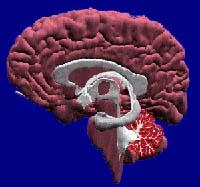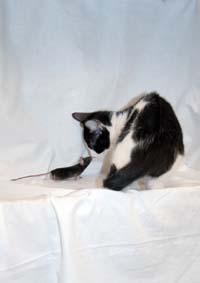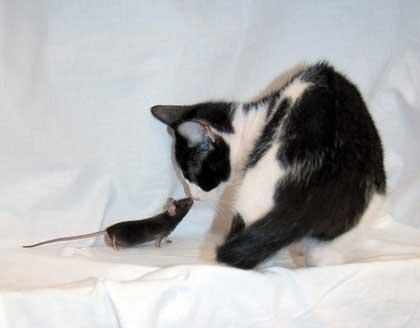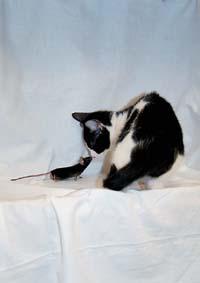Smell of fear and attraction
2007/11/17 Galarraga Aiestaran, Ana - Elhuyar Zientzia

For example, scientists have shown that smell is much more capable of recovering memories than other senses. What's more, not only a fact, but also a memory of the associated emotions. It seems that the explanation is on the path of odors from the nose to the brain. In fact, when aromatic molecules excite nasal olfactory cells, the signal reaches the limbic system of the brain.
The limbic system is a network formed by various brain structures. It is related to unconscious emotions, memory, and behaviors, and is more primitive in evolution than the structure of the brain that deals with conscious thinking. In it is collected, therefore, the signal sent by olfactory cells, and there arises the answer.
The response to a smell can be to remember past emotions and events, or even act in one way or another. Precisely, researchers at the University of Tokyo wanted to know if these olfactory behaviors are intrinsic, innate, or learned, creating mutant mice and analyzing their behavior.
These mutant mice have several deactivated olfactory cells. In fact, olfactory cells are found in the nasal olfactory epithelium, divided into two main areas: the dorsal epithelium and the ventral epithelium. This structure is also found in the part of the brain that is responsible for the smell. And the olfactory cells of the dorsal epithelium are not equal to those of the ventral. Therefore, the researchers considered that they can have different functions. To check this, the mice were genetically modified and the olfactory cells of the dorsal epithelium were inactivated.
Mice without fear
Compared to common mice, mutant mice had a very different behavior in the face of the same smell. For example, the smells of peanut butter and urine from other mice are very attractive to common mice, but mutant mice showed no special interest in those smells.

However, it is more striking (and much more dangerous for mice) to change behavior with odors that indicate danger: mutant mice became horrible. Thus, common mice escape to the smell of rotten food, fox and leopard. To mutant mice, however, those smells did not cause them fear and they were quiet.
Despite having placed the improvised mice next to a cat, they did not leave. The researchers showed that mice were able to smell, but without the olfactory cells of the dorsal epithelium, the brain did not produce an adequate response. Hence the researchers concluded that olfactory cells of the dorsal epithelium are related to innate fear, natural fear.
However, the investigation did not end there. The researchers taught mutant mice to escape the odors that represent danger. To do this, by taking these smells, mice became sick. In the end, before hearing the smell, the mice were afraid and left. Thus, researchers have shown their participation in the sixth part of the terror learned by the olfactory cell of the ventral epithelium.
Thus, in the mouse, smell influences two types of behaviors, the own and the learned. In addition, researchers consider that people have a similar system. In any case, the researchers have highlighted that the learned behaviors can cover the belenists and have mentioned the natto. Natto is made with fermented soy seeds and has a sour smell. In fact, this smell indicates that the food is docile and, therefore, is bad for eating. However, the Japanese have learned that it is good and like. Here the same happens with other drinks and foods.
Smell of Androstenone
Precisely, in an investigation with people, they have seen why a smell that is disgusting for some is pleasant for others. The smell of Androstenone, for example, for some is similar to sweat or urine, and for others, such as flower or vanilla. There are few who do not even see it.

Androstenone is a molecule derived from testosterone, and in pigs it has been shown to be a pheromone, that is, its forgetfulness produces a physiological response. Specifically, the male pork with a smell of androstenone attracts the females. It has been suggested that it has the same influence on people, but butchers know perfectly that pork meat with a high concentration of androstenone is annoying for many consumers.
Apart from pigs, researchers at Rockefeller University in New York have identified the odour cell gene that detects androstenone. And they have seen that there are three variants of the same gene that determine the feeling that the molecule produces in people. However, researchers have not clarified whether this has to do with attraction and behavior among people.
Published in Gara

Gai honi buruzko eduki gehiago
Elhuyarrek garatutako teknologia






